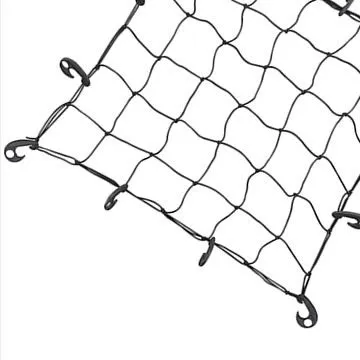Nov . 22, 2024 02:15 Back to list
ceiling tile grid
The Intricacies of Ceiling Tile Grids A Comprehensive Overview
Ceiling tile grids are a vital component of modern interior design and construction. Often overlooked, they play a crucial role in shaping the aesthetics, acoustics, and functionality of a space. This article will delve into the structure, benefits, installation process, and design variations of ceiling tile grids, providing a comprehensive understanding of their importance.
At the most fundamental level, ceiling tile grids consist of a framework made from metal or other durable materials that supports ceiling tiles. These grids are typically suspended from the building's structural ceiling and create a cavity that can conceal electrical wiring, plumbing, and HVAC systems. The grid itself is composed of main runners that run the length of the room, with cross tees forming a grid pattern to facilitate the insertion of ceiling tiles.
One of the primary benefits of ceiling tile grids is their ability to enhance the functionality of a space. The concealed cavity allows for easy access to utilities, making maintenance more straightforward. In commercial buildings, where numerous systems run overhead, this feature can save time and reduce the need for invasive repairs. Moreover, ceiling tiles can be designed to improve acoustics, an essential factor in environments such as offices, schools, and healthcare facilities. Acoustic ceiling tiles absorb sound, reduce noise levels, and create a more conducive atmosphere for work or learning.
In terms of aesthetics, ceiling tile grids provide a versatile canvas for creative expression. They can be finished in various colors and materials, ensuring that they complement the overall design scheme of a space. From sleek, modern finishes to more traditional, ornate designs, the options are virtually limitless. Designers can choose tiles that feature textures or patterns to add visual interest, contributing to a space's overall ambiance.
ceiling tile grid

The installation of ceiling tile grids is a crucial step in the construction or renovation process of any building. Correct installation requires careful planning and precision. First, the grid must be secured to the building’s structural ceiling, ensuring that it can support the weight of the tiles. Accurate measurements are essential, as an incorrectly installed grid can lead to misaligned tiles, uneven surfaces, and potential safety hazards. Typically, the installation process begins with marking the positions of the main runners, followed by hanging them from the ceiling using wires. Once the main runners are in place, cross tees are inserted to complete the grid structure.
In recent years, the ceiling tile grid market has evolved to include innovative solutions such as eco-friendly materials and advanced manufacturing techniques. Sustainable options, such as tiles made from recycled materials or those that incorporate energy-efficient lighting, are gaining popularity. This trend reflects a broader movement towards sustainability in construction and design, where the environmental impact of materials and practices is considered a priority.
Moreover, modular ceiling tiles have become increasingly popular due to their ease of customization. These tiles can be quickly replaced or rearranged, allowing for an adaptable space that can evolve with changing needs. This is particularly beneficial in commercial environments, where the layout may need to shift to accommodate new technologies or workflows.
In conclusion, ceiling tile grids might seem like a standard feature in modern architecture, but their significance cannot be understated. They serve as a practical solution for concealing utilities while also enhancing the acoustic performance and aesthetic appeal of a space. With various design options, ease of maintenance, and the ability to incorporate sustainable practices, ceiling tile grids remain an essential element in contemporary interior design. As building practices continue to evolve, these grids will undoubtedly adapt and innovate, ensuring their place in the future of architecture and design.
-
Durable Ceiling T Grid Systems | Easy InstallationNewsAug.29,2025
-
PVC Gypsum Ceiling: Durable, Laminated Tiles for Modern SpacesNewsAug.28,2025
-
Pvc Gypsum Ceiling Is DurableNewsAug.21,2025
-
Mineral Fiber Board Is DurableNewsAug.21,2025
-
Ceiling Tile Clip Reusable DesignNewsAug.21,2025
-
Ceiling T Grid Modular DesignNewsAug.21,2025







